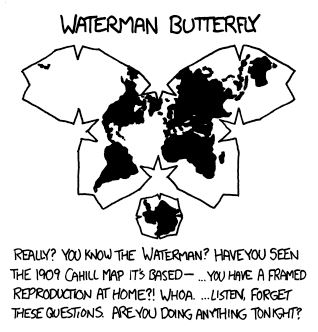

the funny thing is that now, me, a cis man, sitting in the loo, claiming to be pro feminist, is about to write “those aren’t real feminists”.
I’m laughing while writing this.
don’t take me seriously please.


the funny thing is that now, me, a cis man, sitting in the loo, claiming to be pro feminist, is about to write “those aren’t real feminists”.
I’m laughing while writing this.
don’t take me seriously please.


it’s means that either Artificial is zero, or Intelligence is zero (or both). given that we know it’s artificial, it means that it has zero intelligence


reversing sexism isn’t a solution to any issue, it’s the irrational hierarchies that are bad, not the fact that it’s not your people on top.
also, I don’t think I’ve ever heard a feminist talking about “all men are monsters”, but I’ve definitely heard antifeminist men claim they do.
Capitalism:
We make our on economy


takes wrong turn and ends up at Shul.
hope you brought stuff for the potluck


feminist as in “tear down unjust hierarchies”, and definitely not feminist as in “girlboss yay we need more ladies oppressors”


best time to plant a tree my friend
we live though a serious loneliness epidemic.
and capitalism figured out how to exploit it
Chemical x was the author fetishes, which are distinct to the author’s kinks
Pure narcissism
it’s only evil when it happens to them as retaliation, when they do that for decades it’s cute.


maybe I’m too far gone. but I consider lust a good emotion.


are we going to ignore that they put “lust” as a negative?


good to know that a pedo island label lowers the price.
I’m including all the “goo”. all the internal organs will be spread out, and even though they won’t be near the original place, they’ll still maintain lots of proximity relations.
I’m not using it as a perfect example. but as an example that a volumetric 2d projection could maintain positional information, rather than information getting scrambled.
unless gpt fucked up (I do data science, this is far beyond my skills), this is what a sphere in a Hilbert projection looks like:

might be better to use a volume filling surface rather than a volume filling line


wonder if the whole pedophile Island has lowered/risen the price.


they mentioned that, they say how many were killed by falling airdrops.
any protection to a line will be meaningless, mostly because we can’t really put lots of visual information in a single extremely long line.
however,.I disagree in principle, if we flatten a bug, the end result is slightly abstract but we can still identify the bug and features. so we can theoretically agree that a 3d>2d mapping can be done so information is still positionally related a and not scrambled.
question is if the Hilbert projection would do that (i doubt that). but there must be projection methods that would actually work
next interesting question, how would a 3d object look if we map it to a 3d Hilbert curve, and unfold to a 2d hilbert curve.
would properties of the original object be visible, IE, if we use a sphere, would the projection look like a circle?
if the sphere is only a shell and it’s empty inside, would the Hilbert projection show it?
or would the information be scrambled beyond recognition?
that’s what the cowboy hat is for